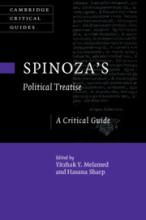In the Political Treatise Spinoza adopts a key element of the traditional approach to political science. He divides the kinds of order that a state can have into three types—monarchy, aristocracy, and democracy—and then proceeds to outline what would be the ideal type of each one. However, in the opening sections of the work Spinoza has attacked those philosophers who have based their ideas of politics on fictional ideas of mankind. Instead of considering men as we wish them to be, he urges us to follow the statesmen and consider men as they are. Spinoza presumably follows his own advice in subsequent chapters, deriving his model constitutional forms from human nature. And yet the models are not actual constitutions but ones that are only possible and they are supposed to serve as prescriptions. This paper investigates the ontology of Spinoza’s model or ideal constitutional forms, to see how they differ (or not) from more traditional (such as Aristotle’s) or contemporary (such as Hobbes’s) typologies of state forms. I argue that the constitutional forms in the Political Treatise are part of a systematic use of fictional ideas in Spinoza’s work.
What Is Real About ‘Ideal Constitutions’? Spinoza on Political Explanation
Rosenthal, Michael. “What Is Real About ‘Ideal Constitutions’? Spinoza on Political Explanation.” In Spinoza’s ‘Political Treatise': A Critical Guide, edited by Yitzhak Melamed and Hasana Sharp, 12-28. Cambridge University Press, 2018.
